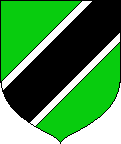Main Page: Difference between revisions
m (Noted pink sunday upgrade.) |
(New pages of the month) |
||
| Line 35: | Line 35: | ||
</tr> |
</tr> |
||
<tr valign="top"><td style="background-color: #f8ffff; border: 2px solid #e2ffff; border-top: none; padding: 0.6em; padding-top: none;"> |
<tr valign="top"><td style="background-color: #f8ffff; border: 2px solid #e2ffff; border-top: none; padding: 0.6em; padding-top: none;"> |
||
'''[[Old English]]''': Old English is an early form of the English language that was spoken in England around 1000 years ago. It is sometimes called Anglo-Saxon as it was mainly derived from the tongue of the Saxons. The language spoken in England is considered Old English 450 AD until some time after the Norman invasion of England (around 1066 AD), when it becomes Middle English. Most Old English texts are now transliterated rather than being produced in period typefaces. <small> ... [[Old English|[more]]]</small> |
|||
'''[[Troubadour]]s''': The nature and origins of the troubadour repertoire hold a remarkable place in the history of music. Its origins are remarkable because they seem to have burst forth as an already developed form with no antecedents. Its nature is remarkable because its fortunes are so closely linked to the fortunes of its homeland in the south of [[France]], known as [[Occitania]]. |
|||
The man credited with the genesis of the troubadour tradition is [[Guilem de Peitieu]], 9th Duke of Aquitaine and 7th Count of Poitiers, one of the most powerful feudal lords of his day. He was the inspiration for most later poets who were to follow in the troubadour tradition.<small> ... [[troubadour|[more]]]</small> |
|||
</td> |
</td> |
||
<td></td> |
<td></td> |
||
<td style="background: #fff3ff; border: 2px solid #ffddff; border-top: none; padding: 0.6em; padding-top: none;"> |
<td style="background: #fff3ff; border: 2px solid #ffddff; border-top: none; padding: 0.6em; padding-top: none;"> |
||
[[Image: |
[[Image:Bendsinisterfimbriated.PNG|right]] |
||
'''Heraldic jargon: ''': |
'''Heraldic jargon: ''': In [[heraldry]], a [[charge]] which is '''[[fimbriated]]''' has an outline in a different [[tincture]]. Only simple geometric charges may be fimbriated, and in [[SCA]] heraldry that charge must pass through the centre of the [[field]]. |
||
'''Dance:''' [[ |
'''Dance:''' [[Febus]] |
||
'''Fibre arts:''' [[ |
'''Fibre arts:''' [[St Cuthbert Maniple and Stole]] |
||
'''Recipe:''' [[ |
'''Recipe:''' [[Compost (recipe)|Compost]] |
||
<small>[[Cunnan:Page of the Month|More details on the Page of the Month.]]</small> |
<small>[[Cunnan:Page of the Month|More details on the Page of the Month.]]</small> |
||
Revision as of 20:40, 31 October 2005
Welcome to Cunnan, a Wiki collecting information for re-enactors of the Middle Ages and Renaissance with a heavy slant towards members of the SCA.
Cunnan is the largest SCA wiki in the world - anyone can edit our articles. You should be bold in updating pages! Articles can only be improved if people are contributing new information and improving old information. So add research information, how-to pages, event information and anything else you can think of. Cunnan should be applicable worldwide, so be mindful of regional differences - use comments such as "In Lochac...". If you see anything that is different in your area, add a note on your local variation.
| April 19: | Cunnan now has more than 4,195 articles! |
| October 9: | Cunnan's software has been upgraded. If anything is broken you should leave a note at the Village pump. |
| Page of the Month | Other Features | |
|---|---|---|
|
Old English: Old English is an early form of the English language that was spoken in England around 1000 years ago. It is sometimes called Anglo-Saxon as it was mainly derived from the tongue of the Saxons. The language spoken in England is considered Old English 450 AD until some time after the Norman invasion of England (around 1066 AD), when it becomes Middle English. Most Old English texts are now transliterated rather than being produced in period typefaces. ... [more] |
Heraldic jargon: : In heraldry, a charge which is fimbriated has an outline in a different tincture. Only simple geometric charges may be fimbriated, and in SCA heraldry that charge must pass through the centre of the field. Dance: Febus Fibre arts: St Cuthbert Maniple and Stole Recipe: Compost |
